The Hazard Perception Test
Keeping a safe distance from other vehicles

The "space cushion" concept
The more space that you have between your car and other vehicles, the more time you have to detect and respond to hazards that might arise when driving. Hazards could be other vehicles changing lanes in front of you or the car ahead braking suddenly to avoid a pedestrian who walks onto the road.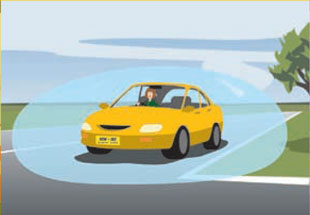
To stay safe, you need to manage the space around your car to the front, sides and the rear. The best way to do this is to imagine an invisible "space cushion" around your car as shown in the following picture.
As you drive along the road, this cushion needs to be maintained by adjusting your speed or position on the road. For example, if the vehicle ahead slows down, you will need to slow down too.
This section explains how you maintain a safe "space cushion" around your car. It covers how to keep a safe distance to:
- the front
- the sides
- the rear.
Maintaining a "space cushion" to the front
This is perhaps the most important part of the "space cushion" for provisional drivers. You may remember the four most common types of provisional driver crashes.
The most common type crash involves the P driver running into the back of another vehicle.
This is also the most common type of crash for all drivers.
Maintaining a "space cushion" to the front also gives you more time to spot other hazards that may arise. To maintain an adequate "space cushion" to the front you need to:
- control your speed to suit the road and traffic conditions
- keep a safe distance between your car and the vehicle in front.
The next two sections help you learn how to do this.
Controlling your speed
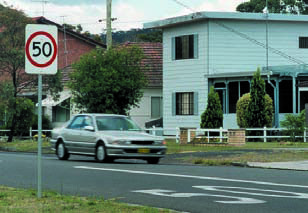
Speed limits, speeding and crashing
Speed limit signs show the maximum speed permitted on a particular road. This is not always the safest speed. Smart drivers adjust their speed to suit the traffic and road conditions.
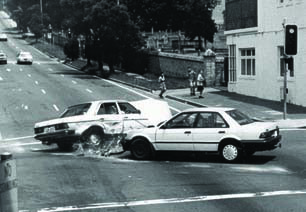
After a few weeks or months of solo driving, it is easy to think that exceeding the speed limit is OK. But think about this. More than one third of all fatal crashes in South Australia are speed related. No one forces you to speed.
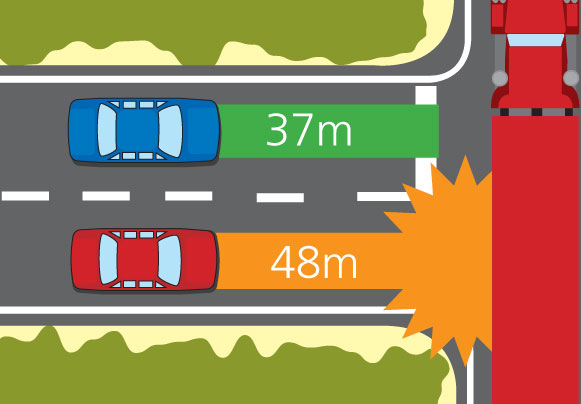
The problems with speed
The problem with speeding is that it cuts down the time that you have to detect and respond to hazards that might come up in the traffic ahead. For example, in the following picture the red car is travelling at 70 km/h and the blue car at 60 km/h. When a truck suddenly backs onto the road and blocks it, the blue car stops in time. But the red car hits the truck because it needs 30% more distance to brake to a stop from 70 km/h. So even 10 km/h can make a big difference.
The following graph shows the distance that you travel at different speeds and the distance that you need to brake to a stop. The faster you go, the more distance you need to stop. You need even more distance when the road is wet.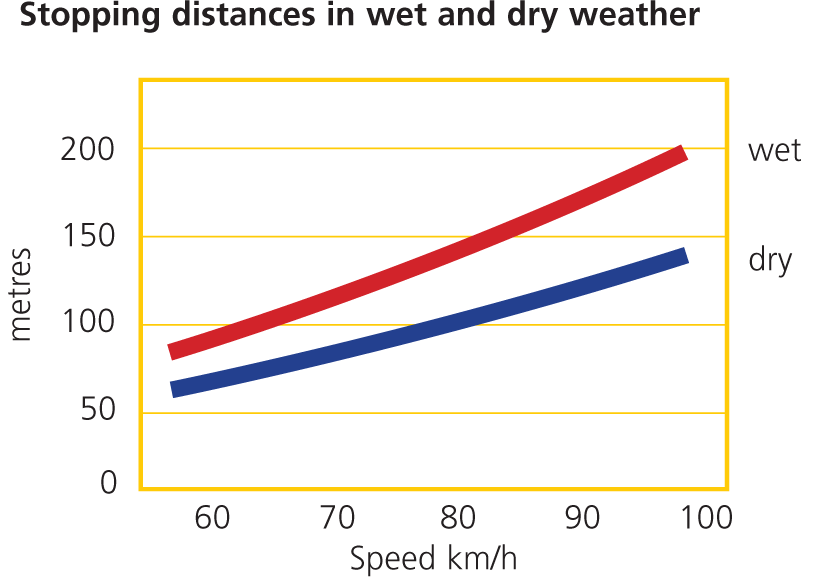
The distance that it takes to stop a car is longer than most drivers think. Think about this. It usually takes about:
- three-quarters of a second to see a hazard and make a decision (e.g. brake or don't brake)
- another three-quarters of a second to take some sort of action (e.g. get your foot from the accelerator to the brake).
This means that about 1.5 seconds have passed before you even start braking! At 60 km/h you will have travelled about 25 metres in this time - half the length of an Olympic swimming pool.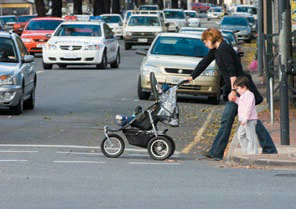
Speeding and crash severity
Speeding also adds to the severity of any crash that you might be involved in. The risk of death and injury increases many times over. The faster you drive, the harder you hit. All that speed energy has to go somewhere. But you might not be the person who is killed or injured. For example, if you hit a pedestrian at 60 km/h you will probably kill them. If you hit them at 50 km/h they are more likely to be injured, but not killed. This is one reason why the 50 km/h local speed limit has been introduced into many parts of South Australia.
Each year many pedestrians are killed or injured on South Australian roads. Regrettably, provisional drivers are over-represented among drivers who hit pedestrians, so remember that when you obtain your P1 provisional licence.
Speed and single vehicle crashes
Speed is a common cause of single vehicle crashes involving P drivers. Put simply, many P drivers drive too fast for the conditions. This reduces their opportunity to detect and respond to hazards such as bends, narrowing roads or rough surfaces. As a result some have crashes where they run off the road and hit something like a tree or a parked car. Many P driver crashes involve only one vehicle - the P driver's own.
You can nearly always avoid these crashes if you control your speed and give yourself enough time to scan ahead for hazards and enough time and space to do something about them. The advice is simple:
- drive within the speed limits
- slow down before entering curves or bends - braking in a curve can be dangerous
- look for and take note of warning signs indicating curves or other hazards ahead and slow down before you get to the hazard
- slow to the speed recommended on the warning signs
- if the weather is bad or the visibility is poor, slow to a speed where you can pull up quickly if a hazard appears.
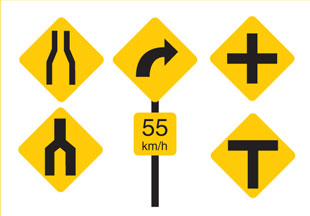
Warning signs like the ones shown in the following picture are there to help you stay out of trouble when driving, by warning you about hazards ahead. However, they will not help you if you are travelling too fast to detect them or to prepare for the hazards indicated.
A final word on speed
Controlling your speed is in your own hands. Sticking to the speed limits and adjusting your speed to suit the conditions will help you avoid a crash, speeding fines or losing your licence through demerit points.
You may not know, but the first year of driving unsupervised on your P1 provisional licence is the year when you are at the greatest risk of having a crash, by controlling your speed you reduce that risk considerably.
Key points summary: Keeping a safe distance from other vehicles
- Maintain a "space cushion" around your car - front, sides and rear.
- Control your speed - obey speed limits and adjust your speed to suit the conditions
Tips
- When you are approaching a place where hazards are likely and you may need to slow or stop quickly (eg pedestrian crossings or shopping areas), take your foot off the accelerator and "cover" the brake. This means that your foot is over the brake pedal but not on it. This lets you brake very quickly if you need to.
- Research shows that speeding is more common at night, particularly by inexperienced drivers. This may be due to having fewer indications of how fast you are going when it is dark (e.g. it's harder to see how quickly objects like trees and poles flash by).
- Travel time surveys show that speeding makes very little difference to your travel time in built-up areas. Apart from the increased risk of a speeding fine and a crash, speeding also costs you more in fuel consumption. Think about this next time you are tempted to drive above the speed limit.
Practice exercises: Controlling your speed
Most experienced drivers have learned to judge how fast they are driving and don't need to look at the speedometer all the time. You do need to check the speedometer regularly, but it is also important to develop a sense of what your car feels like travelling at different speeds, and how the road around you looks. This can help you avoid speeding and give you more time to spot hazards.
For example, when you are driving in a particular speed zone (e.g. 50 km/h, 60 km/h or 80 km/h) observe how quickly you seem to approach and pass stationary objects (e.g. power poles) at the side of the road. Also note how the car feels and what feedback you get from the road (e.g. road noise and vibration).
Without breaking the speed limit, see if you can judge how fast you are going then compare this with the speedometer. Try this from the passenger seat first with someone else driving. Tell the driver how fast you think the car is travelling, then ask them to tell you the actual speed.
Practise in different speed zones, first as a passenger then as the driver. You should get most practice in 50 km/hour, 60 km/hour and 80 km/h zones because these are the most common. Practise until you can usually estimate within about 5% of the actual travel speed.
22-28































